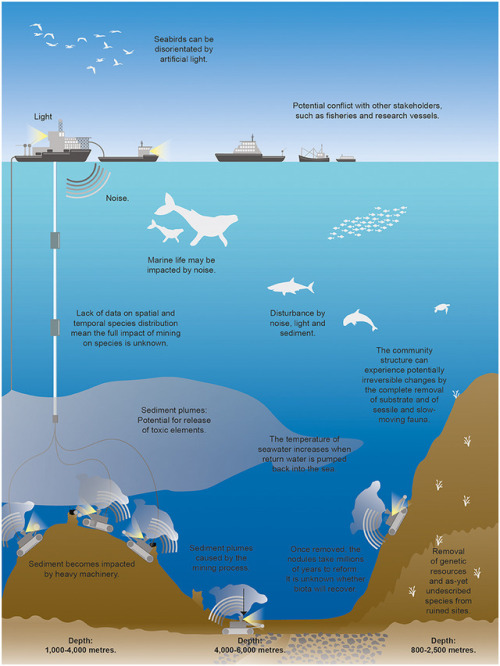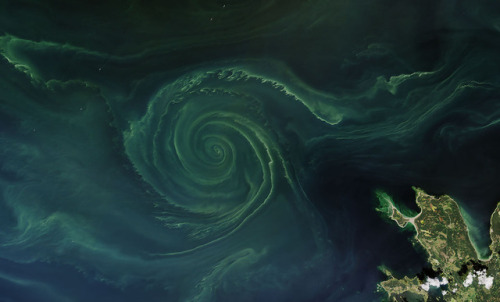Adjustments To A Different Educational Landscape
Adjustments to a different educational landscape
Different systems
Less work
Difficulties
I thought it would be appropriate to write about the different educational landscape after taking my first round of exams for a number of reasons. First, it gives me enough time to adjust (kind of) to the different system, and secondly, it gives me a bit of time to reflect on the system as well.
I'll begin with a brief description outlining different education system. First, most students do not live on campus. Some may live two or three hours away too, which makes me feel awkward when I say I live on campus because the two hour is too long to do two times every day. Second, most classes are only once a week, which can make it easy to forget about work and procrastinate. In fact, my only class that is two times a week is my Spanish class taught by a professor with IFSA-Butler.
In my classes, there is a lot less "busy work," which is bitter sweet for me since busy work helps me stay on top of content but at the same time reduces free time. This also translate into less exams. In each of my three classes that have exams, there are only two. There is a lot of group work, usually including presentations, but in one of my biology labs, it means a lot of lab/field work. In the same course, called Evaluation of Habitat, we had two weekend trips (one to a refuge and one to a biological reserve) to complete small, independent projects.
Adjusting to this new academic system is difficult, especially with the language barrier. I also think that since there fewer numbers of classes every week, it is a lot harder to get a feel for each professor. It is difficult for me to point to few particular skills that I gained during my first year of college that I have used here because for me, I always need to experience it for myself and then I find my footing. It is hard to do it quickly, but I think that the best way for me to make the transition is to simply immerse myself in the system and my work.
IFSA-Butler's main role, especially during orientation, was giving advice to all of us and letting us know that they are there to provide support to us, including offering free tutoring to anyone who wanted it.
More Posts from Simplyphytoplankton and Others
What will scientists find in the deep waters off California?
Deep-sea corals and sponges are some of the oldest animals on Earth, living for hundreds of years at depths beyond direct human observation. Coral, sponge, and fish communities thrive in the cold, deep waters off California’s coast, but are rarely – if ever – visited or observed.
In late July and early August, scientists using advanced technology aboard the NOAA Ship Bell M. Shimada will study unexplored seafloor habitats off North-Central California in NOAA’s Greater Farallones and Cordell Bank national marine sanctuaries. Their focus includes coral, sponge, and groundfish communities. What they learn will help inform the management of these special ocean areas, and add to knowledge about deep-sea habitats and the biological communities that live there.

A crinoid and bubblegum coral grow in the deep sea in Cordell Bank National Marine Sanctuary. Photo: OET/NOAA
Using a robot to explore the deep
To survey the seafloor and record images of the habitats as deep as 2,000 feet (600 meters), scientists are using a remotely operated vehicle (ROV), launched from the ship and sent into the depths of the ocean. In addition to sending real-time video and images via a cable connected to the ship, the unmanned ROV will collect geological and biological specimens for identification. Scientists will also conduct seafloor mapping, an important tool for management of marine areas.

A remotely operated vehicle collects a sponge sample. The yellow sponge is a new species that was found on the wreck of the USS Independence. Photo: OET/NOAA
Why journey to the deep?
The deep sea is vastly unknown because it is largely inaccessible by humans. However, it affects us in many ways. A healthy ocean is essential to the health of our planet, and deep-sea communities are an important part of marine ecosystems. The deep sea nurtures fish stocks and hosts life-forms like bacteria and sponges that have contributed to medical discoveries.
Coral and sponge habitats are among the most biodiverse and productive ecosystems throughout the entire ocean. Increasing global human demand for resources has created a need for expanded science and conservation of these deep-ocean ecosystems and the benefits they may yield. Both living and dead corals and sponges are “biogenic habitats,” where the organisms themselves provide habitat for other marine life.
Previous NOAA expeditions off California’s coast have identified several new species of corals and sponges, including Swiftia farallonesica, a slender white coral, in the deep waters of Greater Farallones National Marine Sanctuary, off the Sonoma County coast. New sponge species were discovered living on the wreck of the USS Independence off the San Mateo County coast. They were also discovered in Cordell Bank National Marine Sanctuary, both in Bodega Canyon and on the deep slope near Cordell Bank to the north. New species discoveries indicate that we still have much to learn about the deep sea.
The ocean supports hundreds of billions of dollars of the U.S. economy through food, jobs, transportation, recreation, and other services. NOAA’s mission is “to understand and predict changes in climate, weather, oceans, and coasts, to share that knowledge and information with others, and to conserve and manage coastal and marine ecosystems and resources.” Assessing the conditions of ocean ecosystems can lead to better management of those areas to support the ocean economy.

Swiftia farallonesica is a new species of coral that was discovered in the deep waters of Greater Farallones National Marine Sanctuary. Photo: NOAA
Stay tuned for more pictures and information after the expedition!

DEEP-SEA MINING COULD DESTROY MARINE ECOSYSTEMS
Despite deep-sea environments covers about half of the Earth’s surface and is home to a vast range of species, little is known about these environments, and mining could have long-lasting and unforeseen consequences, not just at mining sites but also across much larger areas.
According to a study published in scientific journal Frontiers in Marine Science, which is the first to give a global overview of all current plans to mine the seabed, in both national and international waters, and looks at the potential impacts including physical destruction of seabed habitats, creation of large underwater plumes of sediment and the effects of chemical, noise and light pollution arising from mining operations.
Rising demand for minerals and metals, including for use in the technology sector, has led to a resurgence of interest in exploration of mineral resources located on the seabed. Such resources, whether seafloor massive sulfides around hydrothermal vents, cobalt-rich crusts on the flanks of seamounts or fields of manganese nodules on the abyssal plains, cannot be considered in isolation of the distinctive, in some cases unique, assemblages of marine species associated with the same habitats and structures.
Some operations are already taking place, generally at relatively shallow depths near national coastlines. The first commercial enterprise, expected to target mineral-rich sulfides in deeper waters, at depths between 1,500 and 2,000 m on the continental shelf of Papua New Guinea, is scheduled to begin early in 2019.
Illustration: A schematic showing the potential impacts of deep-sea mining on marine ecosystems. Schematic not to scale.
Reference: Miller et al., 2018. An Overview of Seabed Mining Including the Current State of Development, Environmental Impacts, and Knowledge Gaps. Frontiers in Marine Science.
Diatoms: Algae in glass houses
Check out my new post!
http://becausephytoplankton.blogspot.com/2018/09/diatoms-algae-in-glass-houses.html

Blooms in the Baltic
Every summer, phytoplankton – microscopic plant-like organisms – spread across the North Atlantic, with blooms spanning hundreds and sometimes thousands of miles. Nutrient-rich, cooler waters tend to promote more growth among marine plants and phytoplankton than is found in tropical waters. Blooms this summer off Scandinavia seem to be particularly intense.
On July 18, 2018, the Operational Land Imager (OLI) on Landsat 8 acquired a natural-color image of a swirling green phytoplankton bloom in the Gulf of Finland, a section of the Baltic Sea. Note how the phytoplankton trace the edges of a vortex; it is possible that this ocean eddy is pumping up nutrients from the depths.
Though it is impossible to know the phytoplankton type without sampling the water, three decades of satellite observations suggest that these green blooms are likely to be cyanobacteria (blue-green algae), an ancient type of marine bacteria that capture and store solar energy through photosynthesis (like plants).
In recent years, the proliferation of algae blooms in the Baltic Sea has led to the regular appearance of “dead zones” in the basin. Phytoplankton and cyanobacteria consume the abundant nutrients in the Baltic ¬and deplete the oxygen. According to researchers from Finland’s University of Turku, the dead zone this year is estimated to span about 70,000 square kilometers (27,000 square miles).
Read more: https://go.nasa.gov/2uLK4aZ
Make sure to follow us on Tumblr for your regular dose of space: http://nasa.tumblr.com.
Guess hoo-hoo it is 🦉
The owlfish, named for the size of its large eyes relative to its head, lives throughout the North Pacific. These species are in the family Bathylagidae and are relatively common in the deep sea, living at depths of over 6,000 meters (19,685 feet). In Monterey Bay, we observe these fish between a few hundred meters to over 2,000 meters (6,560 feet)
Annual Arctic sea ice minimum, 1979-2016
With Stephen Hawking’s passing, today is a sad day for science. But amongst all his praise and achievements in the fields of physics, for me personally his biggest achievement was making a grand, full life despite the terrible misfortune of being diagnosed with ALS. It would have been easy to become a recluse, embittered with the hand he’d been dealt, a brilliant misanthrope. But this was a man who maintained his sense of humor and refused to be mentally beaten. Three years ago, he told One Direction fans that the theory of alternate universes could provide a reality where Zayn Malik was still in the band. He conducted an interview with John Oliver where his factual, deadpan delivery was funnier than his interviewer, managing the cheekiest grins as he did so. And let us not forget that Stephen Hawking is the only person to have ever portrayed themselves in a Star Trek episode (Next Generation, “Descent, Part 1″), where he appeared alongside actors portraying Einstein and Sir Isaac Newton, whom he proceeded to defeat in poker.

Hawking’s observations on black hole radiation, string theory, alternate universes and artificial intelligence are things that will probably forever remain beyond most of us. But we could all learn a thing or two from his humanity.


Bioluminescent Dinoflagellates
(source)
Advice to other First Generation College students

-
 ididitforthedogs liked this · 9 years ago
ididitforthedogs liked this · 9 years ago -
 simplyphytoplankton reblogged this · 9 years ago
simplyphytoplankton reblogged this · 9 years ago

Blog dedicted to phytoplankton. Phytoplankton are microscopic organisms that are responsible for half of the photosynthesis that occurs on Earth. Oh, and they look like art... Follow to learn more about these amazing litter critters! Caution: Will share other ocean science posts!Run by an oceanographer and phytoplankton expert. Currently a postdoctoral researcher.Profile image: False Colored SEM image of Emiliania huxleyi, a coccolithophore, and the subject of my doctoral work. Credit: Steve Gschmeissner/ Science Photo Library/ Getty ImagesHeader image: Satellite image of a phytoplankton bloom off the Alaskan Coast, in the Chukchi SeaCredit: NASA image by Norman Kuring/NASA's Ocean Color Web https://earthobservatory.nasa.gov/images/92412/churning-in-the-chukchi-sea
158 posts







